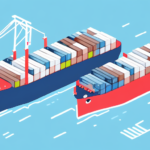Fast Shipping: A Key to Winning Over Ecommerce Customers
In the competitive world of ecommerce, fast shipping can make or break a business. With numerous online retailers vying for customers' attention, consumers are constantly seeking the best deals, which includes receiving their purchases as quickly as possible. This article explores the importance of fast shipping in ecommerce, its impact on customer satisfaction and retention, and how businesses can implement effective strategies to streamline their shipping processes and meet customer expectations.
Why Fast Shipping Matters in Ecommerce
Fast shipping matters in ecommerce because it's a primary expectation of online shoppers. The convenience of shopping from home has made delivery speed a critical component of the customer experience. Leading ecommerce giants like Amazon have set high standards, demonstrating that quick and reliable shipping can significantly influence purchasing decisions. According to a Shopify study, 69% of consumers expect delivery within three days, and 20% demand same-day delivery.
In addition to meeting customer expectations, fast shipping positively impacts a business's bottom line. Studies indicate that offering expedited shipping options can increase conversion rates and lead to higher customer satisfaction and loyalty. For instance, a report by the National Retail Federation found that 80% of consumers consider shipping policies when making purchasing decisions. Fast shipping also helps reduce cart abandonment rates, as customers are more likely to complete their purchases if they know they will receive their items promptly.
The Relationship Between Customer Satisfaction and Fast Shipping
Fast shipping is closely linked to customer satisfaction in ecommerce. When customers receive their purchases quickly and on time, they feel valued and appreciated by the business, which builds trust and increases the likelihood of repeat purchases. Conversely, delayed shipments can lead to frustration and may drive customers to competitors who can offer faster and more reliable service.
Moreover, fast shipping enhances a business's reputation. Satisfied customers are more likely to leave positive reviews and recommend the business to others, leading to increased word-of-mouth marketing and a larger customer base.
However, it's essential for businesses to balance fast shipping with other factors such as cost and sustainability. Some customers may prefer slower shipping options if it means lower costs or a more environmentally friendly choice. Businesses should consider these preferences when designing their shipping policies.
How Fast Shipping Improves Your Reputation in the Online Market
A strong reputation in the online market is crucial for any ecommerce business, and fast shipping plays a significant role in building that reputation. By ensuring quick and reliable deliveries, businesses reinforce their image as dependable and customer-centric. Positive reviews and high satisfaction ratings from previous customers further attract new customers and boost sales.
Investing in fast shipping can also differentiate your business from competitors, positioning you as a leader in the ecommerce space. Additionally, fast shipping contributes to increased customer loyalty. When customers consistently receive their orders promptly, they are more likely to return for future purchases, resulting in a higher customer lifetime value and a stronger customer base overall.
Furthermore, efficient shipping processes can reduce the number of customer service inquiries related to delays or delivery issues, allowing businesses to allocate resources to other critical areas.
The Role of Logistics in Ensuring Fast Shipping
Efficient logistics are critical to ensuring fast delivery times. This involves maintaining accurate inventory levels, effective order management, building relationships with reliable shipping carriers, and optimizing packaging and handling procedures. Streamlining these processes helps reduce the time it takes to process and ship orders, leading to faster delivery times for customers.
Technology plays a vital role in logistics management. Implementing a robust shipping management system can automate processes such as label printing and tracking, saving time and reducing errors. This leads to faster and more accurate deliveries, enhancing the overall customer experience.
Having contingency plans for unexpected events, such as weather disruptions or carrier strikes, is also important. By having backup carriers and alternative shipping routes, businesses can mitigate the impact of these events and ensure that customers receive their orders as quickly as possible.
Tips on Streamlining Your Shipping Process for Faster Delivery
- Automate Processes: Automate order entry, processing, and tracking to reduce manual errors and speed up operations.
- Invest in Technology: Utilize barcode scanning, inventory management software, and tracking systems to enhance efficiency.
- Outsource Logistics: Partner with third-party logistics providers to leverage their expertise and infrastructure for improved shipping performance.
- Optimize Packaging: Use packaging that minimizes handling time and protects products during transit.
- Choose Reliable Carriers: Collaborate with shipping carriers known for their speed and reliability to ensure timely deliveries.
The Impact of Fast Shipping on Customer Retention and Loyalty
Fast shipping significantly influences customer retention and loyalty in ecommerce. Customers who receive their orders quickly and without issues are more likely to return for future purchases and recommend the business to others. According to a study by MetaPack, 96% of customers consider delivery speed important when deciding where to shop online.
By investing in fast shipping and prioritizing customer satisfaction, businesses can cultivate loyal customers who are more likely to remain with them over the long term. This leads to increased customer lifetime value and a stable revenue stream.
How to Set Realistic Expectations for Delivery Times and Meet Them
Setting realistic expectations for delivery times is crucial for maintaining customer satisfaction. While customers may desire rapid delivery, businesses must balance this with the practicalities of shipping and inventory management.
- Provide Clear Information: Clearly display estimated delivery times during the checkout process to set accurate customer expectations.
- Communicate Proactively: Inform customers promptly about any delays or issues that may affect their delivery.
- Use Tracking Information: Offer comprehensive tracking information so customers can monitor their order's progress.
- Set Realistic Delivery Windows: Avoid overpromising by setting achievable delivery windows based on your logistics capabilities.
By managing delivery expectations effectively, businesses can reduce the likelihood of customer dissatisfaction and improve overall satisfaction.
The Importance of Communication with Customers Regarding Shipping Status
Effective communication about shipping status is essential for a positive ecommerce experience. Customers appreciate knowing when their orders have been shipped, when to expect delivery, and being informed about any issues that arise during transit.
- Automated Notifications: Implement automated email or SMS notifications to keep customers updated about their order status.
- Provide Tracking Information: Offer tracking links so customers can monitor their shipment in real-time.
- Responsive Customer Service: Ensure that customer service is accessible and responsive to address any shipping-related inquiries or concerns.
By maintaining clear and consistent communication, businesses can build trust and enhance customer satisfaction.
Case Studies: Businesses That Have Successfully Implemented Fast Shipping Strategies
Several businesses have successfully implemented fast shipping strategies to drive growth and enhance customer satisfaction. For example, Amazon’s Prime program offers members free two-day shipping, significantly boosting customer loyalty and sales. Similarly, Zappos is known for its rapid shipping and exceptional customer service, which have helped it maintain a strong market presence.
Other companies have partnered with third-party logistics providers or invested in automation technologies to improve their shipping speed and reliability. These strategies have enabled businesses to meet customer expectations and stay competitive in the fast-paced ecommerce landscape.
Overcoming Common Challenges in Implementing Fast Shipping in Ecommerce
Implementing fast shipping can present several challenges, especially for smaller businesses with limited resources. Common obstacles include managing inventory levels, partnering with reliable shipping carriers, and balancing speed with cost-effectiveness.
- Inventory Management: Implement robust inventory management systems to ensure accuracy and prevent stockouts.
- Reliable Carriers: Establish partnerships with carriers known for their speed and reliability to ensure timely deliveries.
- Cost Management: Find the right balance between shipping speed and cost to maintain profitability without compromising customer satisfaction.
By addressing these challenges through careful planning and the adoption of technology solutions, businesses can successfully implement fast shipping strategies that enhance customer loyalty and drive revenue growth.
Calculating the ROI of Investing in Fast Shipping for Your Ecommerce Business
Investing in fast shipping can be a significant expense, particularly for ecommerce businesses with low profit margins. However, it's important to consider the potential return on investment (ROI). By reducing delivery times and improving customer satisfaction, businesses can drive increased sales and repeat purchases. Additionally, fast shipping can lead to savings in customer service and returns processing costs.
To calculate the ROI of fast shipping investments, businesses should analyze the following:
- Increased Sales: Measure the impact of fast shipping on conversion rates and average order value.
- Customer Retention: Assess the effect of shipping speed on customer retention and lifetime value.
- Cost Savings: Evaluate reductions in customer service inquiries and return processing costs.
By comparing these benefits against the costs of implementing fast shipping strategies, businesses can make informed decisions about resource allocation and potential profitability.
Best Practices for Maintaining High-Quality Service While Offering Fast Shipping
Maintaining high-quality service while offering fast shipping requires a balance between speed and accuracy. Here are some best practices:
- Process Optimization: Continuously optimize shipping processes to eliminate inefficiencies and reduce delivery times.
- Quality Control: Implement quality control measures such as careful packaging and accurate order fulfillment to prevent errors.
- Carrier Partnerships: Develop strong relationships with shipping carriers to ensure reliable and expedited shipping services.
- Technology Investments: Invest in technology solutions like automated order processing and tracking systems to enhance service quality.
By prioritizing both speed and service quality, businesses can ensure a positive customer experience and foster long-term loyalty.
How to Use Fast Shipping as a Marketing Tool to Attract More Customers
Fast shipping can be leveraged as a powerful marketing tool to attract new customers. By promoting your fast shipping capabilities through various marketing channels, you can highlight your commitment to delivering a superior customer experience.
- Targeted Advertising: Use targeted ads to reach customers who prioritize fast shipping in their purchasing decisions.
- Social Media Campaigns: Highlight your speedy delivery options on social media platforms to engage potential customers.
- Email Marketing: Inform your subscriber base about your fast shipping services and any special offers related to expedited delivery.
- Transparency: Be transparent about your delivery times and shipping processes to build trust and attract customers who value reliability.
By effectively marketing your fast shipping services, you can differentiate your business and attract customers seeking a quick and reliable shopping experience.
Future Trends in Ecommerce: The Growing Demand for Even Faster Delivery
The demand for fast shipping in ecommerce is expected to continue growing as technology advances and consumer expectations evolve. Emerging trends in shipping include same-day and drone delivery, as well as increased use of automation and artificial intelligence (AI) solutions to optimize shipping processes.
- Same-Day Delivery: More retailers are offering same-day delivery options to meet the increasing demand for immediate gratification.
- Drone Delivery: Companies like Amazon are experimenting with drone deliveries to provide faster and more efficient shipping solutions.
- Automation and AI: Automation technologies and AI are being used to streamline shipping operations, predict demand, and enhance logistics management.
By staying abreast of these trends and investing in the appropriate technologies, ecommerce businesses can maintain a competitive edge and continue to meet the growing demand for fast delivery.
Conclusion
Fast shipping is a crucial factor in winning over ecommerce customers and building a successful online retail business. By prioritizing customer satisfaction, investing in technology and logistics solutions, and balancing speed with quality, businesses can achieve faster delivery times and increased customer loyalty. Staying informed about emerging trends and best practices will enable ecommerce entrepreneurs to position themselves for success in a rapidly evolving industry.






















